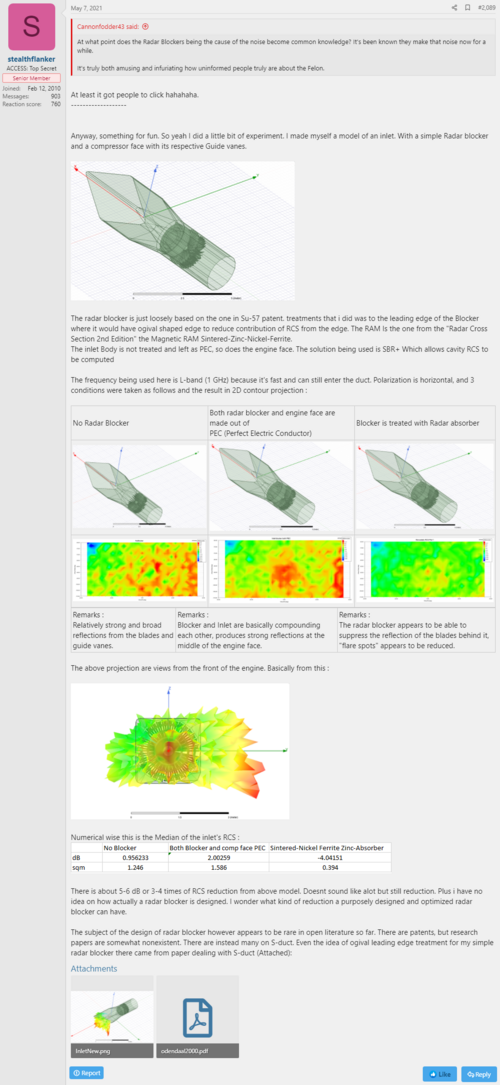vonstroem
I really should change my personal text
- Joined
- 7 March 2019
- Messages
- 10
- Reaction score
- 21
Don't look at other "more" stealthy airplanes up close or you'll be disappointed.
Does RAM always have to be used or just on mission operations? I am being serious about this question. Great this even gives me more questions. As Confucius say, "The man who asks a question is a fool for a minute, the man who does not ask is a fool for life." I heard luneberg lenses are used for stealth aircrafts to hide RCS why not just use no RAM to get the same job done? Or is it because RAM coated aircrafts are still closer to the RCS figures of stealth aircrafts without them?
The fasteners are below the surface. Radar might not even see them.I'm done, I feel like there is no point even getting excited about the maks 2021 airshow anymore.
View attachment 660463
Its like that one animated clip where the F-35 pilot ejects from his seat to launch a rocket launcher at the Su-57 they might as well make an animation of the pilot grabbing the Su-57 wing with one hand and using a Philip screw driver to unscrew the wings off with the other hand. It doesn't even look like the screws are even RAM painted. Time for me to pay attention to other 5th gen projects more.

